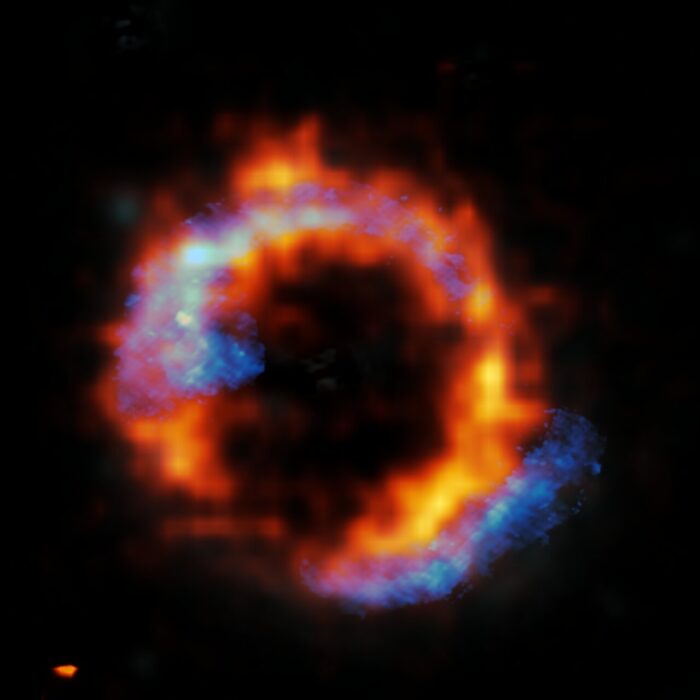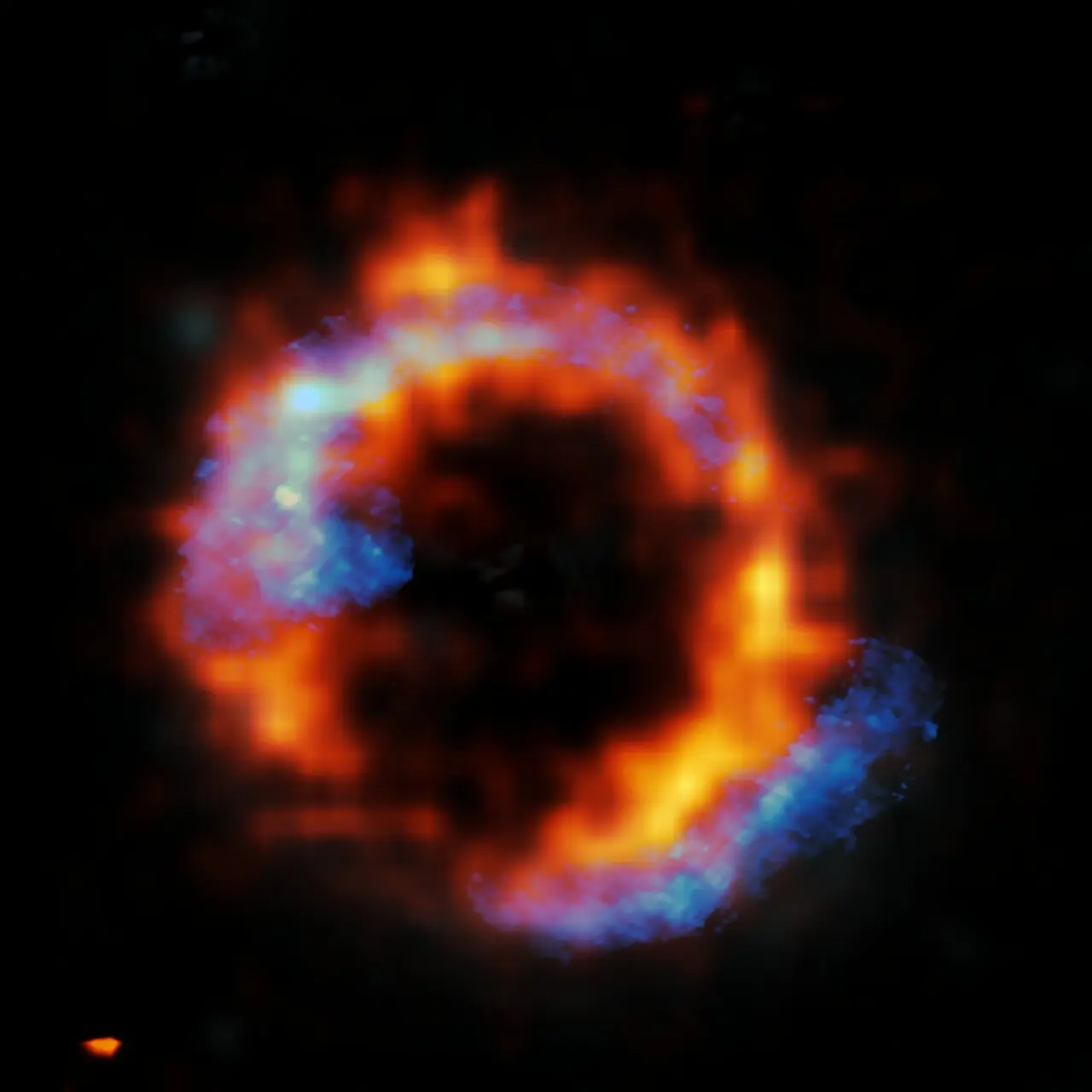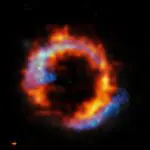Zooming in on a surprising ring
This Picture shows the distant galaxy PJ0116-24, a so-called Hyper Luminous Infrared Galaxy (HyLIRG). HyLIRGs are incredibly bright galaxies, lit up by the extremely rapid star formation within them. But what triggers this?
Previous studies suggested that such extreme galaxies must result from galaxy mergers. These galaxy collisions are thought to create dense gas regions in which rapid star formation is triggered. But isolated galaxies could also become HyLIRGs via internal processes alone if star-forming gas is rapidly funneled towards the galaxy’s center.
In a new paper led by Daizhong Liu (Max-Planck Institute for Extraterrestrial Physics), observations from ESO’s Very Large Telescope (VLT) and the Atacama Large Millimetre/submillimetre Array (ALMA) were combined to study the motion of gas within PJ0116-24. ALMA traces cold gas, seen here in blue, whereas the VLT, with its new Enhanced Resolution Imager and Spectrograph (ERIS), traces warm gas, shown in red. Thanks to these detailed observations, the team discovered that the gas in this extreme galaxy was rotating in an organized fashion rather than in the chaotic way expected after a galactic collision –– a surprising result! This shows convincingly that mergers aren’t always needed for a galaxy to become a HyLIRG.
PJ0116-24 is so far away that its light took about 10 billion years to reach us. Luckily, a foreground galaxy (not shown here) acted as a gravitational lens, bending and magnifying the light of PJ0116-24 behind it into the Einstein ring seen here. This precise cosmic alignment allows astronomers to zoom in on very distant objects and see them in a level of detail that would otherwise be very hard to achieve.
Additional information
ALMA is a partnership of ESO (representing its member states), NSF (USA) and NINS (Japan), together with NRC (Canada), NSTC and ASIAA (Taiwan), and KASI (Republic of Korea), in cooperation with the Republic of Chile. The Joint ALMA Observatory is operated by ESO, AUI/NRAO and NAOJ.
Image

Contacts
-
Nicolás Lira
Education and Public Outreach CoordinatorJoint ALMA Observatory, Santiago - ChilePhone: +56 2 2467 6519Cel: +56 9 9445 7726Email: [email protected]

